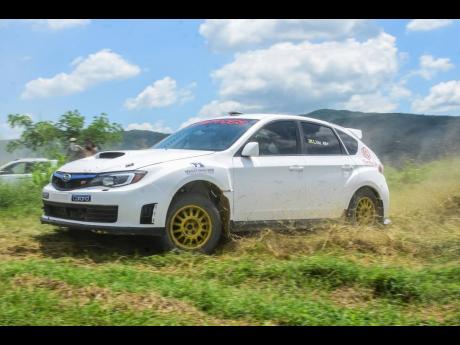Overtaking and passing the right way
Are we overtaking the right way? Overtaking involves making only one lane change into an adjacent lane of faster moving traffic and remaining in the new lane. Sergeant Morrison, a driver instructor, once made the point that much of the dangers in highway driving would be eliminated if drivers never overtook any vehicles. “This would nullify the need for passing. A tactic which demands a lot of practice before it can be executed properly,” says Morrison.
“A driver is usually in a very vulnerable position when passing another motor vehicle on a two-way, two-lane highway,” says Norris Christian, driver instructor. “It’s as if he is running in the wrong lane, straight at oncoming vehicles.”
According to Christian, overtaking should not be done impulsively; the roadway should be absolutely clear before that driver pulls out. “Be sure that you are fully aware of the situation, and if things look doubtful, wait,” advises Christian.
In a passing manoeuvre, the driver makes a lane change, moves pass the vehicle ahead and returns to the original lane. When passing, it is advisable that you do not cut back into your original lane too soon. Also remain within the speed limit when passing. One has to judge the distance from the oncoming traffic. At the same time, you must decide about other hazards on the street.
A driver should never pass at or near an intersection. At intersections, a vehicle from the side street may turn directly into his path.
If a motorist is passing another vehicle, follow these steps:
STEP 1: Ensure that it is legal. Passing at intersections, over double yellow centre lines, and on uphill grades, is not only unsafe but also illegal.
STEP 2: Start your pass when you have a safe following distance ahead.
STEP 3: Make a quick check of your rear-view mirror and blind spots.
STEP 4: Signal for the lane change.
STEP 5: Make a last check for traffic as you accelerate to pass the car ahead. Warn the driver ahead with a tap of the horn. If you have any doubt about making the pass, drop back and wait.
STEP 6: Signal briefly and return to your lane when the front of the car you passed is visible in your inside rearview mirror. While the procedure for passing in the city and the country are like, the risks of passing in the city may be greater. In the city, drivers must be alert for pedestrians, cross traffic, traffic lights and oncoming traffic. The major threat in highway passing is high speed. It is best to pass a car only when the lane for oncoming traffic is completely clear.

